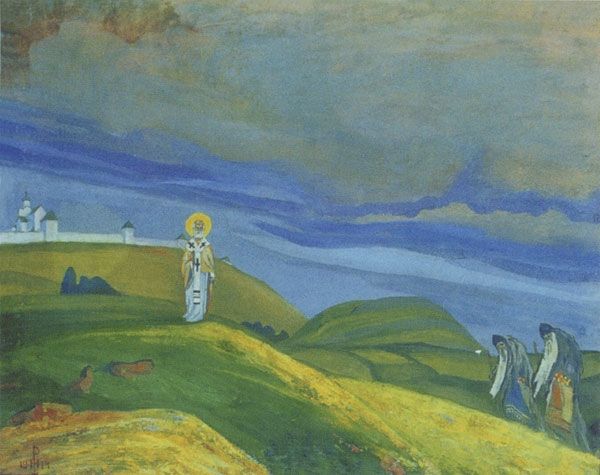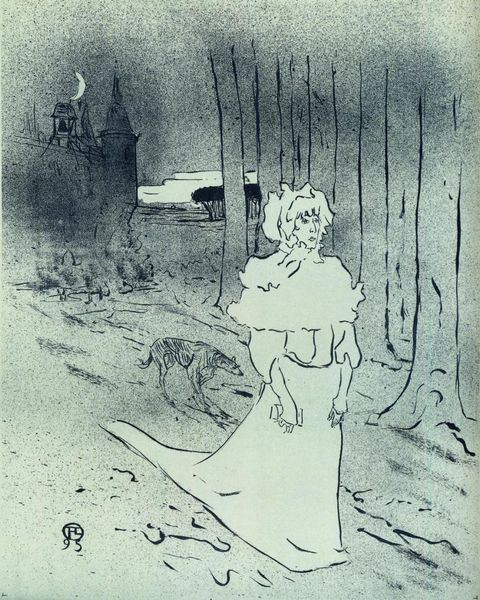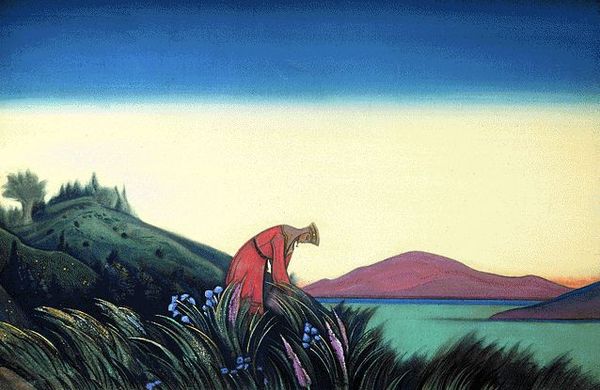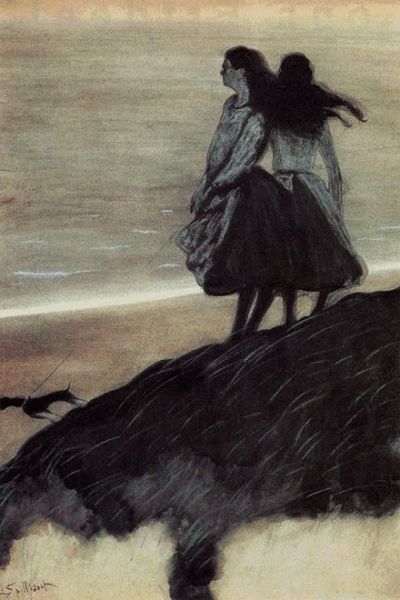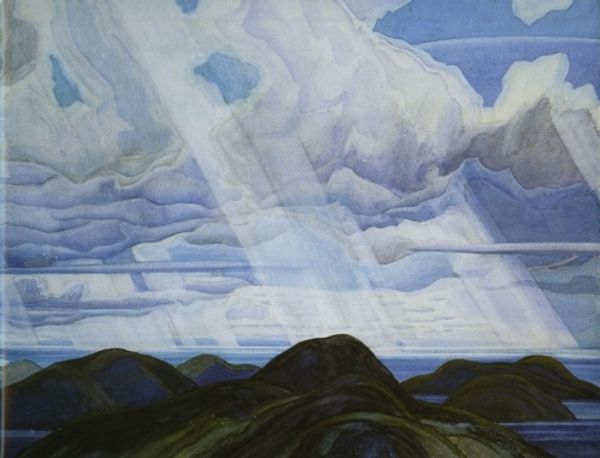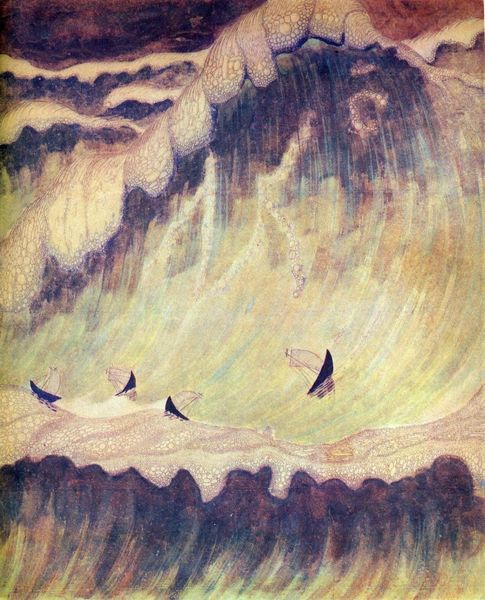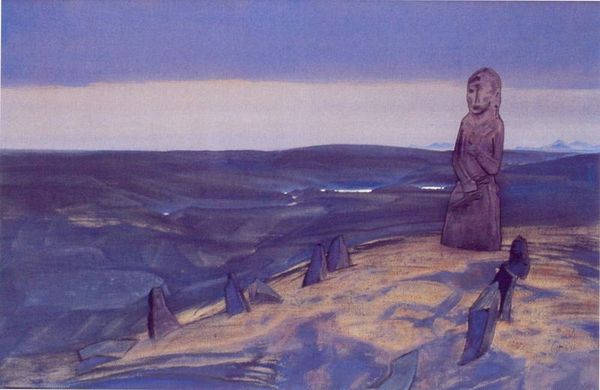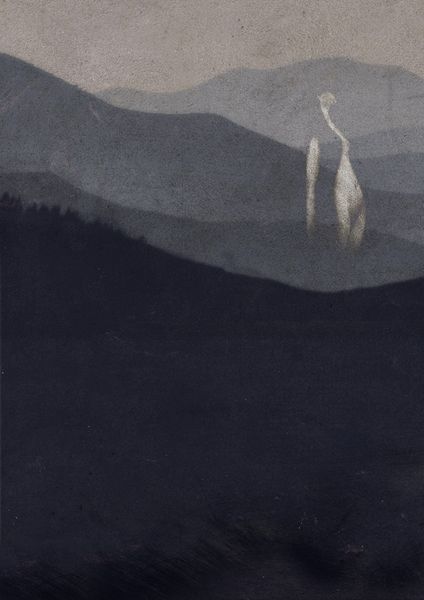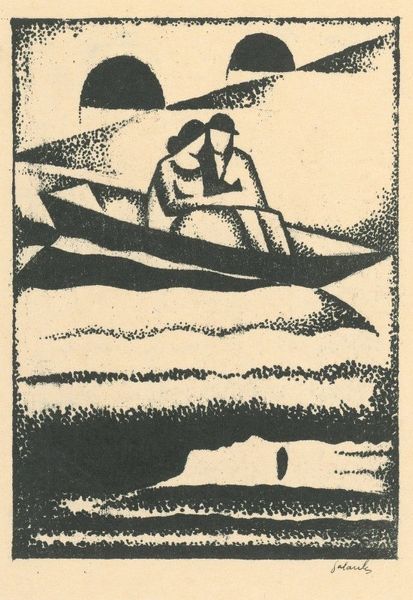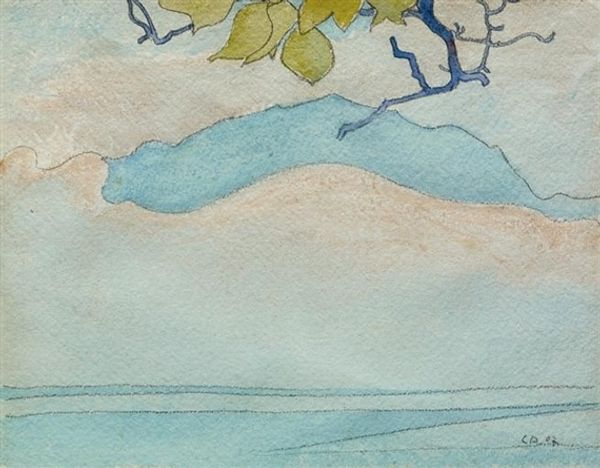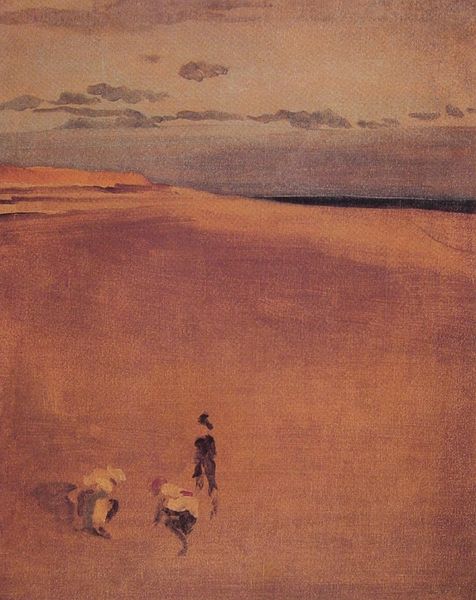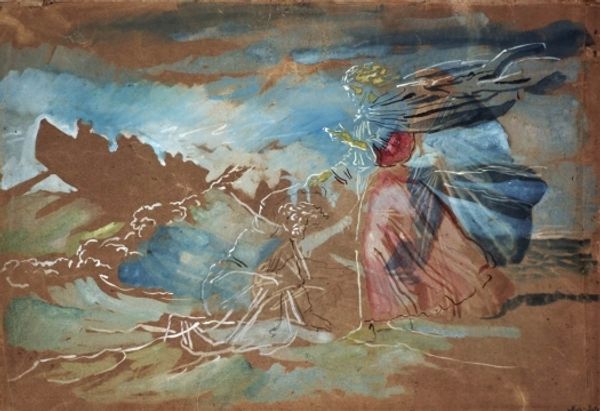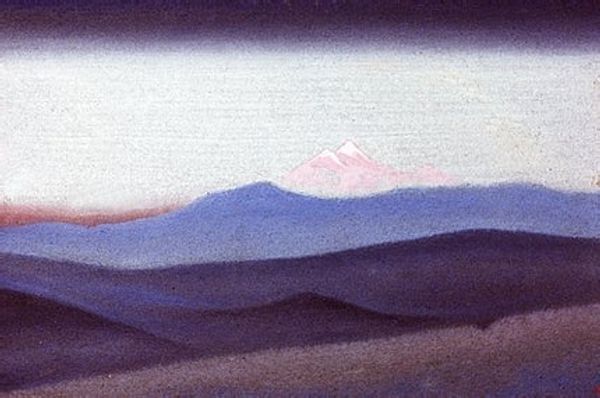
painting
#
painting
#
landscape
#
figuration
#
oil painting
#
naive art
#
watercolor
Copyright: Public domain
Curator: So, "By the Edge," painted in 1915 by Nicholas Roerich. What strikes you first about it? Editor: Well, it's oil on canvas and the mood feels… contemplative. There's this lone figure, seemingly Native American, overlooking the landscape. What do you see in this piece, beyond the immediate visual? Curator: I see a dialogue, perhaps a confrontation, between humanity and the natural world, charged with historical and political weight. Roerich’s fascination with indigenous cultures and spirituality intersects with a broader Orientalist perspective common at the time. How does the figure’s placement on the edge, as the title suggests, resonate with the historical displacement and marginalization of Indigenous communities? Editor: I hadn’t thought of it that way. I just saw the landscape as being... kind of pretty, and the figure seemed peaceful. Is it problematic to appreciate the aesthetic qualities without considering the deeper issues? Curator: Not at all! But consider: whose gaze are we adopting when we appreciate this “peaceful” scene? Roerich was not Indigenous, and his representation, however well-intentioned, participates in a colonial tradition of depicting the ‘other.’ The symbolism embedded in the clouds, landscape, and the figure's attire… Do these symbols reinforce or challenge prevailing stereotypes? Editor: So, even something that seems like a simple landscape can be tied up with ideas about power and representation. The clouds do appear to have almost a human-like form as if watching over the figure. I wonder if Roerich aimed to convey respect, or something else entirely? Curator: Exactly. Exploring those ambiguities, and questioning the artist's intentions within their historical context, opens up space for a more critical and engaged understanding. Editor: I’ll definitely look at landscapes differently from now on! It makes me think more critically about who is telling the story. Curator: Precisely, and whose stories are often left untold.
Comments
No comments
Be the first to comment and join the conversation on the ultimate creative platform.
